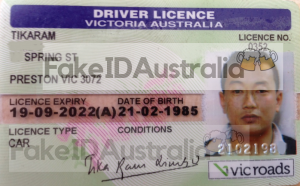Fake ID is not a new phenomenon, people were making these from ages whenever there was a demand. However, things are getting complicated for the last few years as the world we knew changed for good since 9/11. Fake ID is not only a matter of some bank fraud or underage drinking but now it’s a question of national security worldwide. But that did not stop people from using fake IDs, especially the underaged teens who want to enter a pub to get some drinks – they always try to find how to get a scannable fake id , and surprisingly enough, they get those cards for really cheap from a bunch of online sites which are selling such IDs.

What’s a fake ID?
Fake ID, as the name suggests, a fraudulent piece of identity card where the bearer impersonates someone else who he is not in real life. Such fraudulent Ids are nothing new, especially those of are spy thriller fans (Like James Bond movies), know that there are people (fraudsters, criminals, spies) who are using such IDs for many reasons. To prevent the usage of fake IDs, governments implement various measures from time to time; however, the fake ID makers always find ways to dodge that security measures very quickly.
What measures are being taken to prevent fake IDs?
Flashpoint’s research found that vendors running some of the highest-rated illicit shops will advertise their ability to replicate the security features found on identification cards including correctly formatted barcodes, certain micro-printing or laser perforations. For example, a proper barcode is often enough to allow entrance into access-controlled facilities such as government buildings, schools or corporate offices.
Governments from all over the world are taking extreme steps to counter this fake ID issue, such as microprinting, barcoding, laser printing, holographs, and many more. A few countries like the USA went to the extent of adding biometric features in their IDs. Just a few years back, India also introduced a new type of IP card named AADHAR, where they added biometric features like fingerprinting of all ten fingers and cornea as well. Such measures certainly helped to curb the spread of fake ids up to a point; however, it seems not to be enough to eliminate fake IDs from the root. Why? Let’s find out.
Why are modern safety features not enough to eliminate fake ID business totally?
There are multiple reasons, but the main reason is affordable technology. Governments implementing newer features, but at the same time, there are high-end printers in the market that can fake those features easily. Such technologically advanced printers are widely available, and cybercriminals are getting their hands on that type of types of equipment very easily. Though if the IDs have biometric features, it becomes next to impossible to fake such features – but there are workaround even for such cases. Sometimes it’s not possible to check biometrics in a card like traffic police can’t validate biometric due to lack of proper device with them, so people can get away with a fake ID even if it has invalid biometric data.


